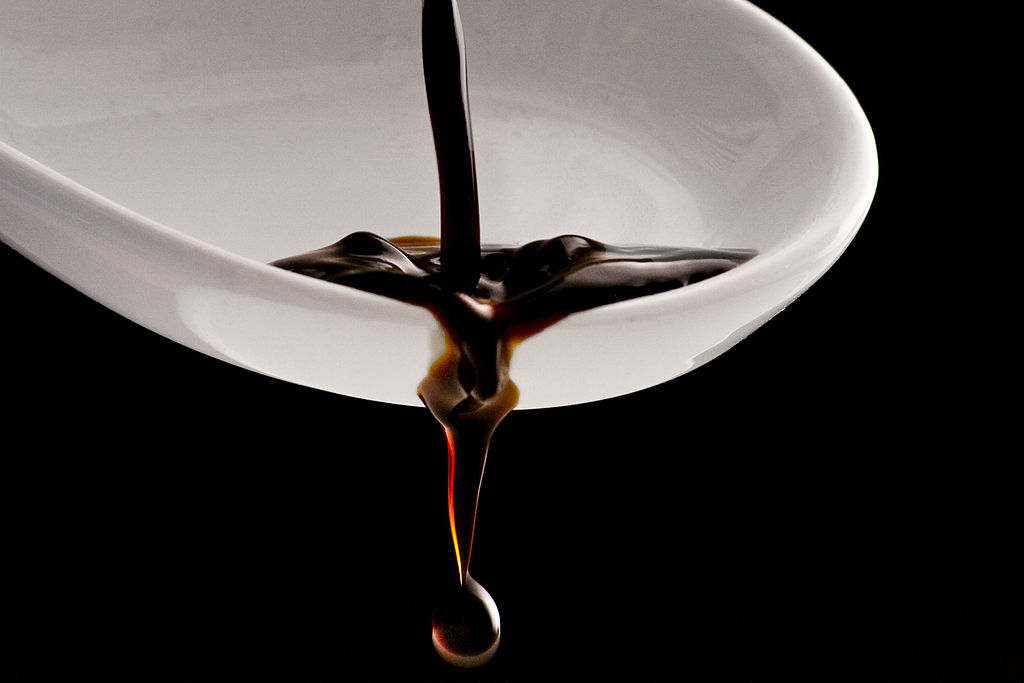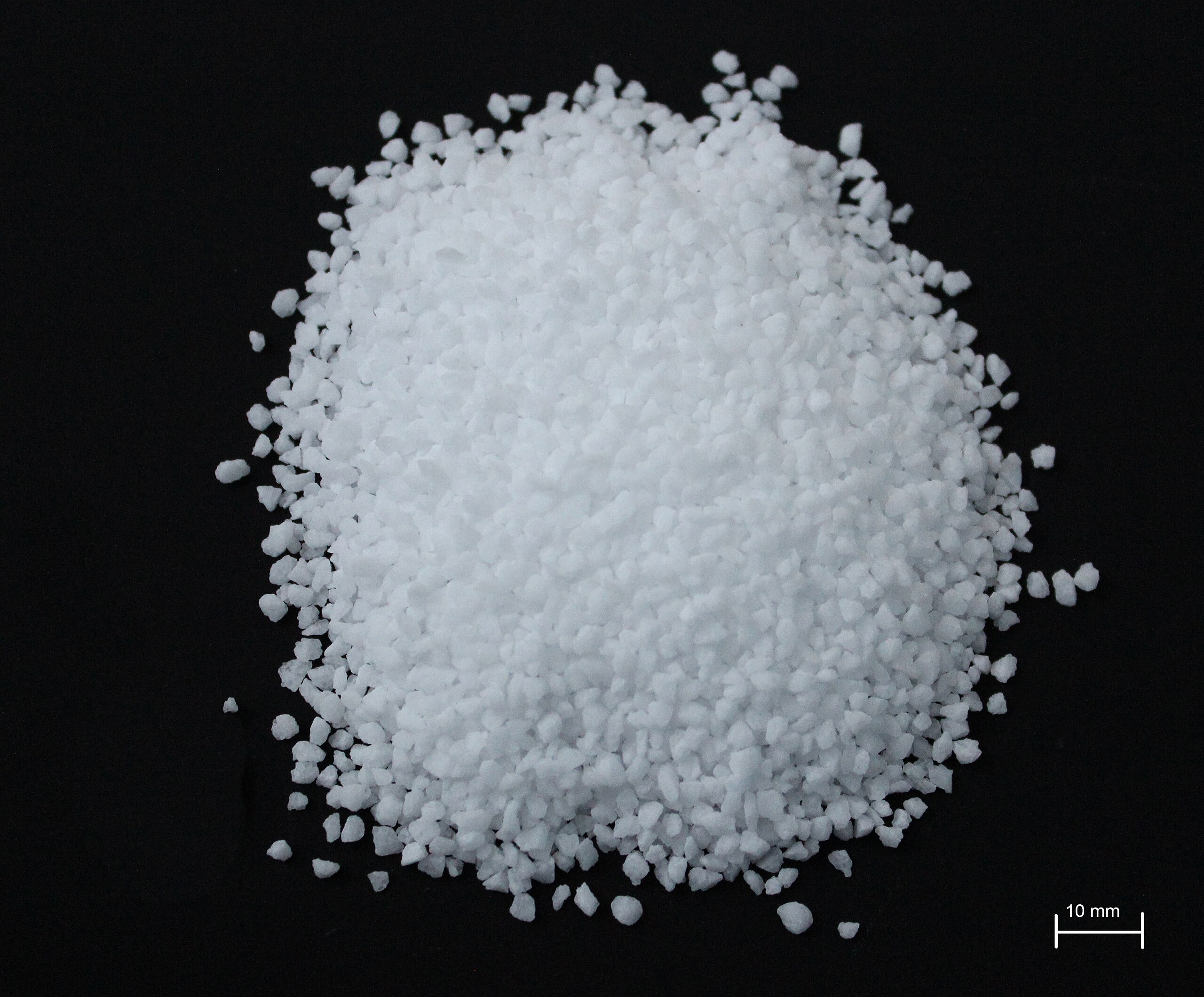Balsamic Vinegar vs. Salt
Nutrition comparison of Balsamic Vinegar and Salt
Ever wonder how your favorite foods stack up against each other in terms of nutrition?
We compared the nutritional contents of
balsamic vinegar
versus
salt
(100g each)
below using 2020 USDA and NIH data[1].
For a quick recap of significant nutrients and differences in balsamic vinegar and salt:
- Salt has signficantly less calories than balsamic vinegar.
- Salt has signficantly less sugar than balsamic vinegar.
USDA sources for nutritional information: Balsamic Vinegar (Vinegar, balsamic) and Salt (Salt, table) . Have a correction or suggestions? Shoot us an email.
Calories and Carbs
calories
Salt has signficantly less calories than balsamic vinegar - balsamic vinegar has 88 calories per 100 grams and salt does not contain significant amounts.
| Balsamic Vinegar | Salt | |
|---|---|---|
| Protein | 4% | ~ |
| Carbohydrates | 96% | ~ |
| Fat | ~ | ~ |
| Alcohol | ~ | ~ |
carbohydrates
Salt has less carbohydrates than balsamic vinegar - balsamic vinegar has 17g of total carbs per 100 grams and salt does not contain significant amounts.
sugar
Salt has signficantly less sugar than balsamic vinegar - balsamic vinegar has 15g of sugar per 100 grams and salt does not contain significant amounts.
Protein
protein
Balsamic vinegar has more protein than salt - balsamic vinegar has 0.49g of protein per 100 grams and salt does not contain significant amounts.
Vitamins
The B Vitamins
Minerals
calcium
Balsamic vinegar and salt contain similar amounts of calcium - balsamic vinegar has 27mg of calcium per 100 grams and salt has 24mg of calcium.
iron
Balsamic vinegar and salt contain similar amounts of iron - balsamic vinegar has 0.72mg of iron per 100 grams and salt has 0.33mg of iron.
potassium
Balsamic vinegar has 13 times more potassium than salt - balsamic vinegar has 112mg of potassium per 100 grams and salt has 8mg of potassium.
Customize your serving size
The comparison below is by common portions, e.g. cups, packages. You can also see a more concrete comparison by weight at equal weight (by grams) comparison.
Note: The specific food items compared are: Balsamic Vinegar (Vinegar, balsamic) and Salt (Salt, table) .
Balsamic Vinegar g
()
|
Daily Values (%) |
Salt g
()
|
|||||
|---|---|---|---|---|---|---|---|
| KCAL % |
|
5% | calories | 5% |
|
KCAL % | |
| G % |
|
5% | carbohydrates | 5% |
|
G % | |
| G % |
|
5% | dietary fiber | 5% |
|
G % | |
| G | 5% | sugar | 5% | G | |||
| G % |
|
5% | total fat | 5% |
|
G % | |
| G % |
|
5% | saturated fat | 5% |
|
G % | |
| G | 5% | monounsaturated fat | 5% | G | |||
| G | 5% | polyunsaturated fat | 5% | G | |||
| G | 5% | trans fat | 5% | G | |||
| MG | 5% | cholesterol | 5% | MG | |||
| MG % |
|
5% | sodium | 5% |
|
MG % | |
| 5% | Vitamins and Minerals | 5% | |||||
| UG % |
|
5% | Vitamin A | 5% |
|
UG % | |
| MG % |
|
5% | Vitamin C | 5% |
|
MG % | |
| IU % |
|
5% | Vitamin D | 5% |
|
IU % | |
| MG % |
|
5% | calcium | 5% |
|
MG % | |
| MG % |
|
5% | iron | 5% |
|
MG % | |
| MG % |
|
5% | magnesium | 5% |
|
MG % | |
| MG % |
|
5% | potassium | 5% |
|
MG % | |
| MG % |
|
5% | thiamin (Vit B1) | 5% |
|
MG % | |
| MG % |
|
5% | riboflavin (Vit B2) | 5% |
|
MG % | |
| MG % |
|
5% | niacin (Vit B3) | 5% |
|
MG % | |
| MG % |
|
5% | Vitamin B6 | 5% |
|
MG % | |
| MG % |
|
5% | pantothenic acid (Vit B5) | 5% |
|
MG % | |
| UG % |
|
5% | folate (Vit B9) | 5% |
|
UG % | |
| UG % |
|
5% | Vitamin B12 | 5% |
|
UG % | |
| MG % |
|
5% | Vitamin E | 5% |
|
MG % | |
| UG % |
|
5% | Vitamin K | 5% |
|
UG % | |
| G % |
|
5% | protein | 5% |
|
G % | |
| UG % |
|
5% | biotin (Vit B7) | 5% |
|
UG % | |
| MG % |
|
5% | choline | 5% |
|
MG % | |
| MG % |
|
5% | chlorine | 5% |
|
MG % | |
| UG % |
|
5% | chromium | 5% |
|
UG % | |
| MG % |
|
5% | copper | 5% |
|
MG % | |
| UG % |
|
5% | fluoride | 5% |
|
UG % | |
| UG % |
|
5% | iodine | 5% |
|
UG % | |
| MG % |
|
5% | manganese | 5% |
|
MG % | |
| UG % |
|
5% | molybdenum | 5% |
|
UG % | |
| MG % |
|
5% | phosphorus | 5% |
|
MG % | |
| UG % |
|
5% | selenium | 5% |
|
UG % | |
| MG % |
|
5% | zinc | 5% |
|
MG % | |
| G | 5% | Water | 5% | G | |||
| G | 5% | Starch | 5% | G | |||
| G | 5% | Alcohol | 5% | G | |||
FAQ
Does balsamic vinegar or salt contain more calories in 100 grams?Salt has signficantly less calories than balsamic vinegar - balsamic vinegar has 88 calories in 100g and salt does not contain significant amounts.
Does balsamic vinegar or salt have more carbohydrates?
By weight, salt has fewer carbohydrates than balsamic vinegar - balsamic vinegar has 17g of carbs for 100g and salt has no carbs..

